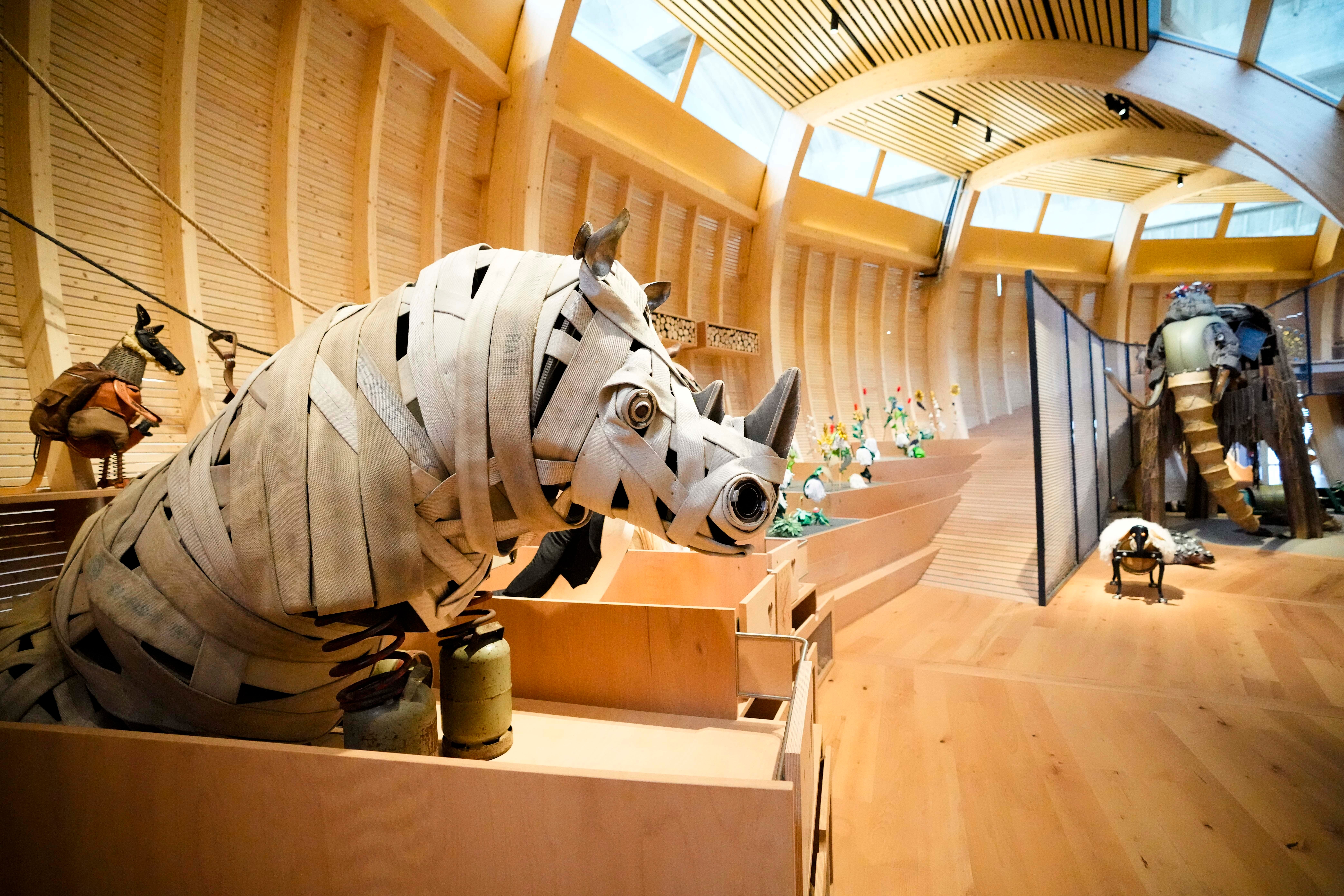Jewish Museum in Berlin opens kids' museum about Noah's Ark
The Jewish Museum Berlin is opening a new museum for children dedicated to the story of Noah’s Ark

Your support helps us to tell the story
From reproductive rights to climate change to Big Tech, The Independent is on the ground when the story is developing. Whether it's investigating the financials of Elon Musk's pro-Trump PAC or producing our latest documentary, 'The A Word', which shines a light on the American women fighting for reproductive rights, we know how important it is to parse out the facts from the messaging.
At such a critical moment in US history, we need reporters on the ground. Your donation allows us to keep sending journalists to speak to both sides of the story.
The Independent is trusted by Americans across the entire political spectrum. And unlike many other quality news outlets, we choose not to lock Americans out of our reporting and analysis with paywalls. We believe quality journalism should be available to everyone, paid for by those who can afford it.
Your support makes all the difference.Torrential rain pours down, waves break and big puddles splash as visitors enter the new children's museum at the Jewish Museum in Berlin No surprise there, because the exhibit is dedicated to the ancient story of Noah's Ark and begins in the middle of the biblical deluge.
Young children are invited to actively participate in Noah's journey as soon as they set foot in the new ANOHA Children’s World, which opens Sunday. They can build little arks that they can float on a “deluge simulator” or help rescue 150 animals, created by over a dozen artists out of recycled material such as old spoons, espresso coffeemakers, pieces of carpet or bike fenders. They can even use the animals' pretend excrement — represented by brown felt balls — to fertilize plants.
They can also cuddle a gigantic sloth, crawl through the serpentine body of an anaconda or take a rest on a yellow-eyed octopus.
The circular, wooden Ark is the centerpiece of the museum and spans 7 meters (23 feet) tall and 28 meters (91 feet) wide. At its heart is an empty space where visitors are invited to sit down, linger and think about life's big universal questions: about God and the world, the past and the future.
At the end of the tour, there are glimpses of the earth again, rocks lurking out of the retreating floods and a big rainbow on which kids can write their thoughts, wishes or worries.
The ANOHA museum was built inside a former flower market, across the street from the Jewish Museum's main building on a 2,700 square-meter (29,000 square-foot) space. It was meant to open in May 2020 but was delayed by the coronavirus pandemic.
While the main Jewish Museum's permanent and temporary exhibitions primarily cater to adults and teenagers, the children's museum targets the youngest visitors, children between 3 and 10.
“We tried to always listen to the children when we created this world,” Ane Kleine-Engel, the head of the children's museum, told The Associated Press. “From the beginning of the museum's development, children were involved in the process and we plan to keep them on board as co-curators in the future as well.”
Beyond giving the kids ample space for play and creativity, the museum also tries to teach them about the importance of protecting the planet and biodiversity and fighting climate change.
“We want the children to start thinking about big themes, too, when they come here,” Kleine-Engel said. “When the animals get on board of the ark, they can't choose who they like or dislike — everybody has to come along in order to survive, nobody should be excluded.”
The museum also educates children about equality and diversity and tries to make them understand that racism, antisemitism and inequality should have no place on the Ark or in real life, Kleine-Engel added.
And thus, in a very hands-on way, children can make sure that the cockroaches, rats and snakes also get a spot on Noah's Ark. They can put them on the lap of a huge orangutan who will keep them from falling into the water.
In the end, all animals get a free ride on the Ark — as well as the children and their parents, who also get free entry into the museum.